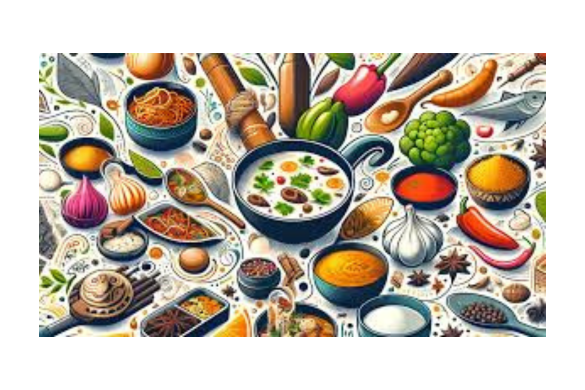Ever had that feeling when you bite into something delicious and think, “Wow, this is SO good… I wonder who first thought of this?” It’s fascinating to imagine that many of the flavors we enjoy today have roots in Ancient Food Dishes. These age-old recipes, passed down through generations, are the very foundation of the diverse cuisines we savor now. The origins of certain dishes can transport us back thousands of years, connecting us with ancient cultures and their culinary innovations. Who would’ve thought that a simple meal could carry so much history?
Well, get ready to have your mind blown, because we’re about to dive into the fascinating world of ancient food! That’s right, we’re talking about dishes that were enjoyed by people thousands of years ago – and guess what? They’re still super popular today!
We’ll uncover the secrets of these culinary time travelers. From simple flatbreads that fed entire civilizations to hearty stews that warmed the bellies of ancient warriors, we’ll explore how these dishes have evolved and adapted over centuries, yet still retain their essential deliciousness.
We’ll also uncover some fun facts and surprising connections. Did you know that a certain type of bread eaten in ancient Egypt is still enjoyed in parts of the Middle East today? Or that a popular Indian curry has roots in a dish served in the courts of Mughal emperors?
Get ready to be amazed at how the simple act of eating connects us across time and cultures. Let’s dig in!
Most Popular Foods From Ancient Times
1. Bread: The Universal Staple
Bread is one of the oldest prepared foods, with evidence of flatbreads dating back over 14,000 years. It is a versatile staple food that has taken countless forms across different cultures. From the soft pita of the Middle East to the crusty French baguette, bread’s enduring popularity lies in its simplicity and ability to adapt to various cuisines.
Historical Roots
The earliest bread was likely unleavened and made from ground grains mixed with water and cooked over fire. With the discovery of yeast, leavened bread became common around 6,000 years ago in Egypt. Egyptians were among the first to use yeast in baking, turning flatbread into a leavened loaf. The significance of bread in ancient Egypt is evident in the fact that it was often used as a form of currency and as offerings to the gods.

Popular Variations Today
- Pita: A round, flatbread that puffs up when cooked, creating a pocket that can be filled with various ingredients. Pita bread has been eaten in the Middle East for thousands of years.
- Sourdough: Thought to have originated in ancient Egypt, sourdough is a type of bread that uses naturally occurring yeast. The fermentation process gives the bread its distinct tangy flavor.
- Roti: A type of unleavened flatbread, roti has been a staple in Indian cuisine for thousands of years. Made from whole wheat flour, it’s traditionally served with curries.
2. Noodles: A Cross-Cultural Culinary Delight
Noodles, one of the world’s oldest and most consumed foods, have an ancient origin and a fascinating history. Noodles are thought to have been invented in China around 4,000 years ago, although similar dishes appeared in ancient Rome and the Middle East.
Historical Roots
The oldest evidence of noodles comes from an archaeological site in northwestern China, where a 4,000-year-old bowl of millet noodles was found. These ancient noodles were long and thin, much like today’s spaghetti. However, it’s also believed that the Romans and Greeks consumed early forms of pasta around the same time, though their preparation methods differed.

Popular Variations Today
- Ramen: Originating in China but made popular by Japan, ramen is now a global sensation. It consists of wheat noodles served in a broth, often with toppings like meat, eggs, and vegetables.
- Pho: A Vietnamese noodle soup, pho is made with flat rice noodles and typically features a flavorful broth, herbs, and meat. It’s believed to have roots in Chinese and French culinary traditions, yet it has become distinctly Vietnamese.
- Spaghetti: Though often associated with Italy, spaghetti’s ancestors likely came from China. Today, it’s the quintessential Italian dish, typically served with tomato sauce and various toppings.
3. Sushi: An Ancient Artform in Japanese Cuisine
Sushi, one of the most popular dishes globally, is deeply rooted in Japanese culture, with a history that dates back more than 1,000 years. Initially, sushi was a method of preserving fish in fermented rice, a far cry from the delicate rolls we know today.

Historical Roots
The concept of sushi originated in Southeast Asia as a means of preserving fish. The fish was placed in fermented rice to keep it fresh, and over time, the fermentation process gave way to the practice of using vinegared rice, which led to the development of sushi as we know it.
Popular Variations Today
- Nigiri: A hand-pressed portion of rice topped with a slice of raw fish or seafood. Nigiri is one of the most traditional forms of sushi, retaining the essence of its historical roots.
- Maki: The more familiar form of sushi in the West, maki involves rolling fish, vegetables, and rice in seaweed (nori), then slicing it into bite-sized pieces.
- Sashimi: While technically not sushi since it doesn’t include rice, sashimi is an ancient Japanese dish consisting of thin slices of raw fish, served with soy sauce and wasabi.
READ MORE: Ancient Indian Remedies That Are Still Quite Popular: A Comprehensive Guide
4. Tamales: Ancient Mesoamerican Delicacy
Tamales are a traditional dish from Mesoamerica, believed to date back as far as 7,000 years. These corn dough parcels, stuffed with various fillings and wrapped in corn husks or banana leaves, were a staple for ancient civilizations like the Aztecs and Maya.
Historical Roots
Tamales were portable, durable, and nutritious, making them the perfect food for warriors, travelers, and laborers in ancient civilizations. They were often filled with meats, beans, or even fruits and served at religious feasts and celebrations.

Popular Variations Today
- Mexican Tamales: Today, Mexican tamales come in a variety of flavors, from savory fillings like pork, chicken, or cheese to sweet tamales filled with fruit or chocolate.
- Guatemalan Tamales: In Guatemala, tamales are made using larger, softer corn dough, wrapped in banana leaves, and often served with a rich tomato-based sauce.
- Tamales Oaxaqueños: Originating from the Mexican state of Oaxaca, these tamales are distinct in that they are typically wrapped in banana leaves and have a smoother texture compared to other varieties.
5. Hummus: Ancient Middle Eastern Comfort Food
Hummus, a beloved Middle Eastern dish, has been a staple for over 7,000 years. Made primarily from mashed chickpeas, tahini, lemon juice, and garlic, hummus has transcended its ancient origins to become a global favorite.
Historical Roots
The exact origin of hummus is contested, with various regions of the Middle East claiming it as their own. What is clear, however, is that chickpeas have been a dietary staple in the region for millennia, and the combination of chickpeas and sesame (tahini) has been enjoyed for thousands of years.

Popular Variations Today
- Classic Hummus: The traditional version is a creamy dip made from mashed chickpeas, tahini, garlic, and lemon juice, often drizzled with olive oil.
- Roasted Red Pepper Hummus: A modern twist on the classic recipe, roasted red pepper hummus adds a smoky, sweet flavor to the traditional mix.
- Beet Hummus: Another modern variation, beet hummus incorporates roasted beets into the classic hummus base, giving it a vibrant pink color and earthy flavor.
6. Porridge: Ancient Comfort Food Across Cultures
Porridge, a dish made by boiling grains or legumes in water or milk, is one of the oldest forms of cooked food. Its simplicity, nutrition, and adaptability have made it a staple in various cultures for thousands of years.
Historical Roots
Evidence of porridge dates back over 12,000 years. The ancient Greeks and Romans consumed variations of porridge made from grains like barley, while across the world, different cultures developed their own versions, from Chinese rice porridge (congee) to Scottish oats.

Popular Variations Today
- Oatmeal: In Scotland, oatmeal has been a staple for centuries. Rolled oats are cooked in water or milk and often served with fruits, honey, or nuts.
- Congee: A type of rice porridge popular in many Asian countries, congee can be savory or sweet and is often served with meat, eggs, and vegetables.
- Polenta: A traditional Italian dish, polenta is made from boiled cornmeal and is often served with meat, cheese, or vegetables.
7. Cheese: From Ancient Pastures to Global Delight
Cheese is one of the oldest forms of food preservation, with origins dating back more than 7,000 years. The art of making cheese likely originated in the Fertile Crescent, where domesticated animals like cows and goats were first milked.

Historical Roots
The discovery of cheese is thought to have been an accident, occurring when milk was stored in containers made from animal stomachs, which contained natural enzymes that caused the milk to curdle and separate into curds and whey.
Popular Variations Today
- Cheddar: Believed to have originated in England around the 12th century, cheddar is one of the world’s most popular cheeses. It’s firm, with a sharp taste that develops with aging.
- Feta: Originating in ancient Greece, feta is a brined cheese made from sheep or goat’s milk. Its tangy, salty flavor has made it a staple in Mediterranean diets for thousands of years.
- Parmesan: Known as Parmigiano-Reggiano in Italy, this hard, granular cheese dates back to medieval times and is prized for its rich, nutty flavor.
8. Stew: Ancient Comfort Food
Stew is one of the oldest and most universal forms of cooking. The concept of simmering ingredients in a liquid is ancient, and evidence of stews can be found in virtually every culture.
Historical Roots
The earliest evidence of stew dates back to prehistoric times, with ancient humans likely boiling meat and vegetables in water to create a nutritious, hearty meal. The use of various meats, vegetables, and local herbs made stews adaptable to different regions and climates. Stews were often a practical solution to utilize available ingredients, providing nourishment during harsh winters or long journeys.

Popular Variations Today
- Bouillabaisse: A traditional fish stew from the Mediterranean region of France, bouillabaisse was originally a dish made by fishermen using fish that couldn’t be sold at the market. It’s now a celebrated gourmet dish, often made with a variety of seafood and flavored with saffron, garlic, and herbs.
- Irish Stew: A rustic dish traditionally made with lamb or mutton, potatoes, onions, and carrots, Irish stew has been a beloved comfort food in Ireland for centuries.
- Tagine: Originating in North Africa, particularly Morocco, tagine is a slow-cooked stew named after the earthenware pot in which it is prepared. It typically includes meat, vegetables, and dried fruits, seasoned with aromatic spices like saffron, cinnamon, and cumin.
9. Kimchi: A Staple of Korean Cuisine
Kimchi, a fermented vegetable dish that has been a cornerstone of Korean cuisine for centuries, dates back to ancient times. Originally developed as a way to preserve vegetables during the harsh winters, kimchi is now a beloved dish with numerous variations and health benefits.
Historical Roots
The earliest records of kimchi date back to around 2,000 years ago, during the Three Kingdoms period in Korea. Initially, kimchi was a simple dish made from salted vegetables, but over time, the introduction of chili peppers and other ingredients expanded its flavors and complexity.
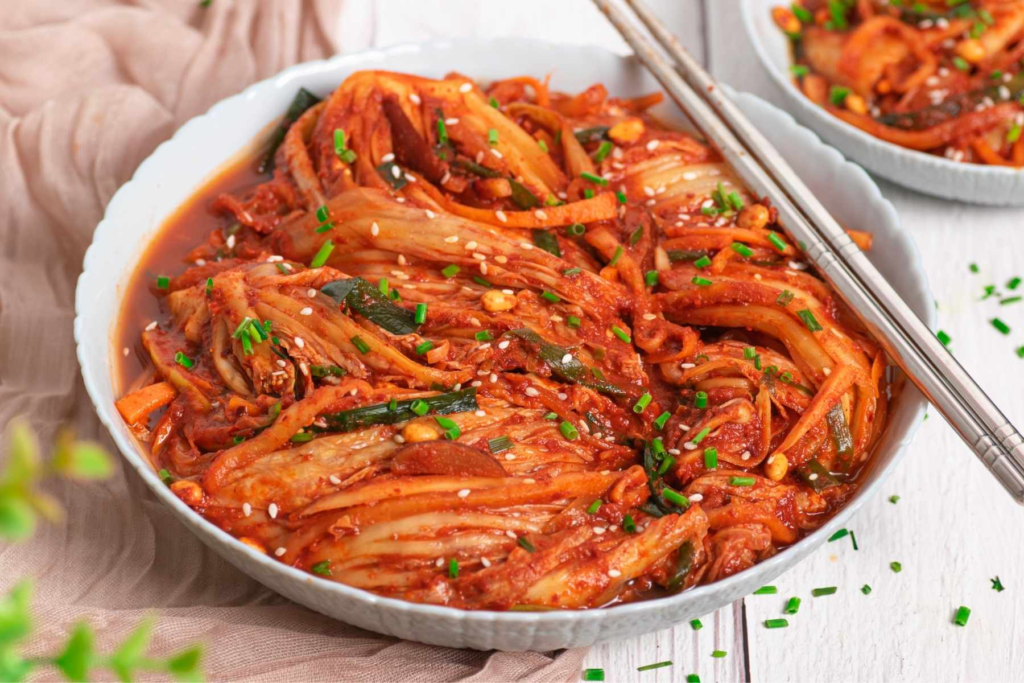
Popular Variations Today
- Baechu Kimchi: The most common variety, made with napa cabbage and seasoned with red chili powder, garlic, ginger, and fish sauce.
- Kkakdugi: A variation of kimchi made from cubed radishes, offering a crunchy texture and a slightly different flavor profile compared to cabbage-based kimchi.
- Oi Sobagi: A refreshing cucumber kimchi, often enjoyed in the summer for its light, crisp taste.
10. Falafel: Ancient Middle Eastern Street Food
Falafel, crispy fried balls made from ground chickpeas or fava beans, is one of the most ancient street foods in the Middle East. It has been enjoyed for centuries and remains a popular dish today, particularly in Israel, Lebanon, Egypt, and across the Mediterranean.
Historical Roots
The origin of falafel is debated, but it is believed to have been created in Egypt as early as 1,000 years ago. Some suggest it was originally made with fava beans, which were plentiful in the region. Falafel eventually spread across the Middle East, where chickpeas became the more common ingredient.
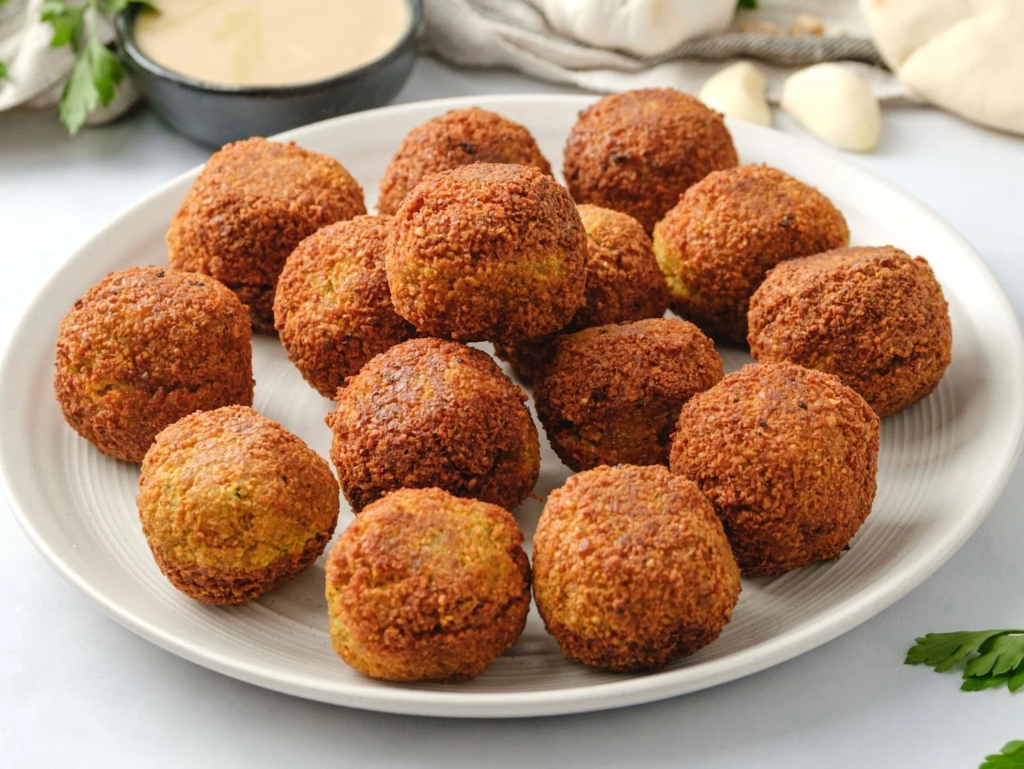
Popular Variations Today
- Traditional Falafel: Typically made with chickpeas or fava beans, mixed with herbs and spices, then deep-fried to perfection. It’s commonly served in pita bread with salad and tahini.
- Egyptian Falafel (Ta’ameya): Made from fava beans instead of chickpeas, Egyptian falafel has a distinct texture and flavor. It is usually spiced with coriander, cumin, and garlic.
- Falafel Wrap: A modern take on the classic, where falafel balls are wrapped in flatbread with various accompaniments like hummus, pickles, and vegetables.
READ MORE: What is Digital Detox & Why Do You Need It?
11. Curry: A Global Phenomenon with Ancient Roots
Curry is not a single dish but rather a collection of dishes characterized by their use of complex spice mixtures. The word “curry” comes from the Tamil word “kari,” meaning sauce. This culinary tradition dates back thousands of years, with ancient versions of curry being consumed in India as far back as 2,000 BCE.
Historical Roots
The earliest evidence of curry has been found in the Indus Valley, where ancient mortars and pestles used to grind spices have been uncovered. Indian curries often include a base of turmeric, coriander, and cumin, but the variations are nearly endless depending on region and ingredients available.
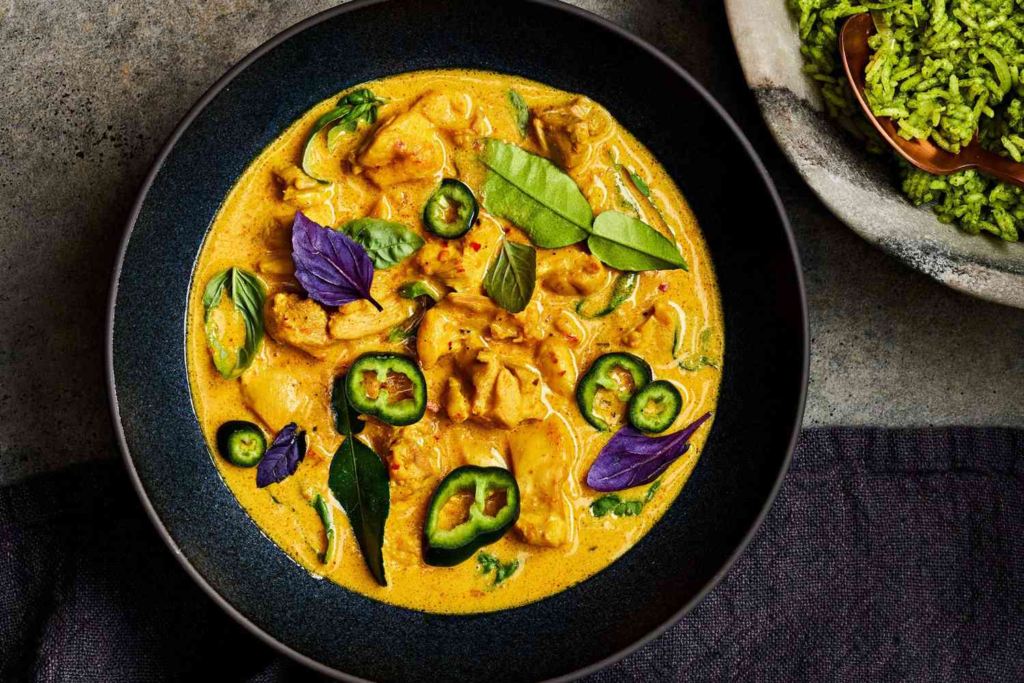
Popular Variations Today
- Indian Curry: Indian curries vary widely depending on the region, but common versions include rich, creamy butter chicken, spicy vindaloo, and lentil-based dal.
- Thai Curry: Thai curries are known for their balance of sweet, spicy, and savory flavors, with the use of ingredients like coconut milk, lemongrass, and galangal. Popular versions include green curry, red curry, and Massaman curry.
- Japanese Curry: Mild and often slightly sweet, Japanese curry is usually served with rice or bread and features a thick, rich sauce made from curry powder, onions, carrots, and potatoes.
12. Pierogi: Eastern European Comfort Food
Pierogi, a type of dumpling from Eastern Europe, has been a beloved dish for centuries. Filled with various ingredients, including potatoes, cheese, meat, or fruit, pierogi are boiled and then often pan-fried for a crispy exterior. They have become a symbol of Polish cuisine, although variations exist in many other countries.

Historical Roots
The history of pierogi is somewhat unclear, but it is believed to date back to the 13th century in Poland. Pierogi may have been influenced by similar dishes from China (such as dumplings) that made their way to Europe via trade routes.
Popular Variations Today
- Classic Potato and Cheese Pierogi: The most traditional version, filled with mashed potatoes and cheese, often served with sour cream or fried onions.
- Meat-Filled Pierogi: Another popular variation, these pierogi are filled with minced meat, such as pork or beef, and seasoned with herbs and spices.
- Fruit Pierogi: A sweet variation, filled with seasonal fruits like strawberries, blueberries, or plums, often served with a drizzle of sweet cream or sugar.
13. Baklava: A Sweet Legacy from the Ottoman Empire
Baklava, a rich, sweet pastry made of layers of filo dough filled with nuts and sweetened with honey or syrup, is a centuries-old dessert with roots in the Ottoman Empire. It remains a popular dessert in Turkey, Greece, and other parts of the Middle East.
Historical Roots
While its exact origins are debated, baklava is believed to have been created in the kitchens of the Topkapi Palace in Istanbul during the Ottoman period. The recipe may have been influenced by earlier desserts from the Assyrian and Byzantine empires, but it was refined and perfected in the Ottoman court.

Popular Variations Today
- Turkish Baklava: Traditionally made with pistachios and drenched in a simple syrup flavored with lemon or rosewater.
- Greek Baklava: Often made with walnuts and almonds and sweetened with honey, giving it a slightly different flavor profile than its Turkish counterpart.
- Middle Eastern Baklava: In countries like Lebanon and Syria, baklava is often made with a mix of nuts and lightly sweetened with a fragrant syrup made from orange blossom or rose water.
14. Tzatziki: A Refreshing Greek Classic
Tzatziki, a creamy yogurt-based dip or sauce from Greece, has ancient origins and remains a popular accompaniment to many Mediterranean dishes today. It’s made from yogurt, cucumber, garlic, olive oil, and herbs like dill or mint.
Historical Roots
The origins of tzatziki can be traced back to ancient Greece and Rome, where similar yogurt-based dishes were consumed. The cooling nature of yogurt, combined with cucumbers and garlic, made it a refreshing dish for the hot Mediterranean climate.

Popular Variations Today
- Classic Tzatziki: The traditional Greek version, often served with grilled meats, pita bread, or as a dip for vegetables.
- Middle Eastern Variations: In Middle Eastern cuisines, a similar dish known as “raita” is served, particularly in India, where it’s often spiced with cumin or other regional spices.
- Modern Twists: Some variations today include the addition of avocado, herbs like parsley, or even a touch of lemon zest for added freshness.
15. Miso Soup: A Japanese Comfort for Centuries
Miso soup, a simple yet profound dish made from fermented soybean paste (miso), has been consumed in Japan for over 1,000 years. It is traditionally served as part of a Japanese meal, especially for breakfast, and is known for its umami-rich flavor.
Historical Roots
Miso itself is an ancient ingredient, with origins in China, where fermented soybean products were common. The Japanese adopted and refined the process, creating a variety of miso pastes that range from sweet to salty. Miso soup became a staple in Japanese households due to its simplicity and nutritional value.
Popular Variations Today
- Traditional Miso Soup: Made with miso paste, tofu, seaweed, and green onions, it’s a light and nourishing dish.
- Modern Variations: Some contemporary versions may include mushrooms, pork, or seafood for added depth of flavor.
- Miso Ramen: In some modern twists, miso is used as a base for ramen broth, blending the rich flavors of miso with the heartiness of ramen noodles.
No doubt. ancient food dishes that have stood the test of time do more than just provide sustenance; they carry stories, traditions, and a sense of cultural identity. Whether it’s bread baked in the shadow of ancient pyramids or sushi crafted with the precision of centuries-old methods, these dishes connect us with our ancestors while continuing to evolve in modern kitchens.
The enduring popularity of these ancient foods speaks to their timeless appeal, rooted in simplicity, adaptability, and the human desire for comfort and nourishment. The next time you bite into a tamale or dip your spoon into a bowl of miso soup, remember that you’re not just enjoying a meal — you’re participating in a tradition that has spanned generations, cultures, and centuries.
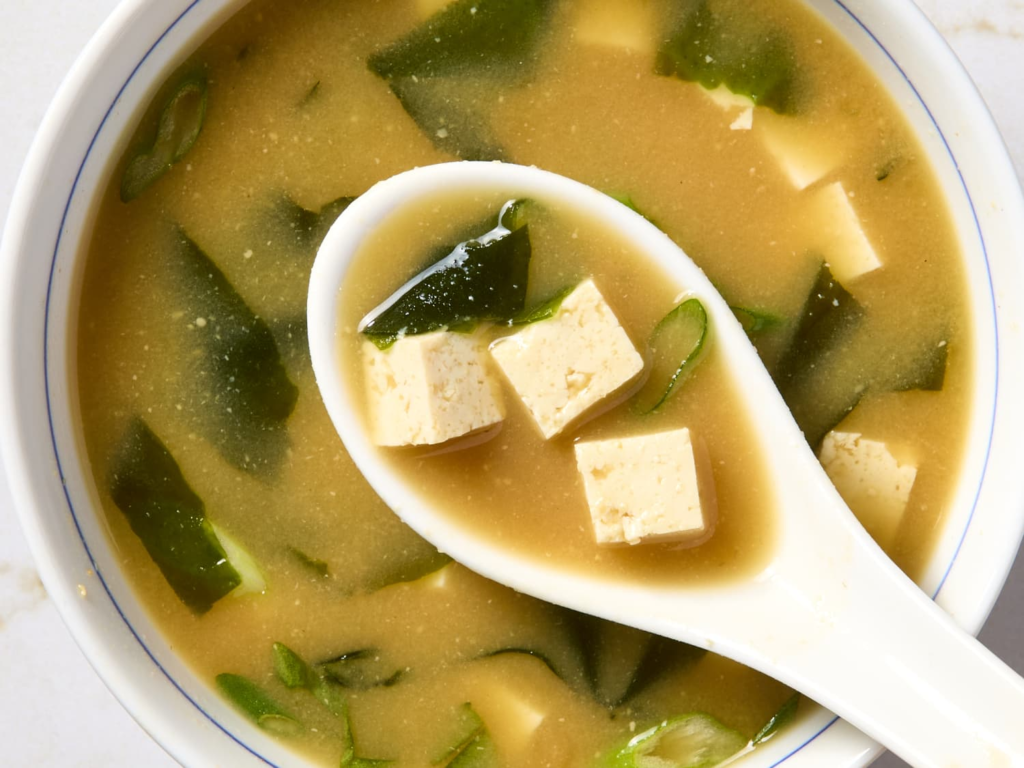
What is the Significance of Ancient Foods in Modern Times?
In today’s fast-paced world, where food trends are constantly changing and new culinary inventions are introduced daily, it’s remarkable to see these ancient dishes not only survive but thrive. The significance of these dishes goes beyond just flavor; they represent a deep connection to cultural heritage, history, and community.
- Preservation of Tradition: Many of these ancient dishes are closely tied to religious ceremonies, family gatherings, or cultural festivals. For example, tamales are still made during holidays like Christmas in many Latin American countries, and kimchi plays a vital role in Korean celebrations. These dishes often carry personal family recipes that have been handed down for generations, making them an essential part of cultural continuity.
- Sustainability and Resourcefulness: A common trait among many ancient dishes is their use of locally available ingredients and minimal waste. In an era of environmental consciousness, dishes like stews, curries, and miso soup, which utilize all parts of the ingredients, align with modern values of sustainability and reducing food waste.
- Health Benefits: Many of these ancient dishes, such as hummus, miso soup, and kimchi, have been found to offer substantial health benefits. Fermented foods like kimchi and miso are rich in probiotics, which promote gut health. Meanwhile, whole grains and legumes used in dishes like bread and hummus provide essential nutrients. The simplicity and focus on natural ingredients in many ancient dishes make them healthier options compared to processed foods.
- Universal Appeal: These ancient dishes have been embraced by cultures outside their place of origin, making them global staples. For instance, sushi has found fans across continents, and curry, in its many variations, has become a favorite in countries far from its roots in South Asia. This cross-cultural culinary adoption highlights how food can bridge cultural divides and bring people together through shared tastes and experiences.
Adapting Ancient Dishes for the Modern Palate
While these ancient dishes have remained largely unchanged in terms of their fundamental ingredients and methods, many modern variations have emerged to suit contemporary tastes, dietary preferences, and lifestyles.
- Fusion Cuisine: One of the most significant trends in modern cooking is fusion cuisine, where chefs combine elements from different cultures to create something new. Dishes like sushi burritos (a blend of sushi and Mexican burritos) or kimchi tacos are examples of how ancient foods can be reimagined in fun and inventive ways.
- Vegan and Gluten-Free Variations: As dietary preferences evolve, many ancient dishes have been adapted to accommodate plant-based or gluten-free diets. For example, gluten-free bread and pasta alternatives have been developed to make ancient foods like bread and noodles accessible to those with gluten intolerance. Vegan versions of ancient dishes like falafel or hummus have become mainstream, allowing people with dietary restrictions to enjoy these time-honored dishes.
- Fast-Casual Dining: Many ancient dishes are now available in modern fast-casual dining formats. For instance, Mediterranean restaurants serving falafel and hummus bowls or Japanese sushi chains offering grab-and-go options have made these dishes more accessible to busy, modern consumers.
Reviving Ancient Techniques in the Kitchen
Along with the resurgence of ancient dishes, there has been a growing interest in reviving traditional cooking methods. Chefs and home cooks alike are rediscovering the value of ancient techniques, such as fermentation, slow cooking, and stone milling, which offer deeper flavors and more wholesome, nutrient-dense meals.
- Fermentation: The process of fermenting vegetables, grains, and dairy has been practiced for thousands of years. Today, fermentation is celebrated not only for its ability to preserve food but also for its health benefits, such as boosting gut health through probiotics. Kimchi, sourdough bread, and yogurt are just a few examples of ancient fermented foods that have become increasingly popular in recent years.
- Stone Milling: Ancient grains like spelt, emmer, and einkorn are being revived in kitchens around the world. Stone milling, a method used in ancient times to grind grains, is also making a comeback due to the belief that it produces more flavorful and nutritious flours compared to modern milling methods. Traditional breads made with ancient grains and stone-ground flours are increasingly sought after by health-conscious consumers.
- Slow Cooking: Stews, curries, and soups have traditionally been slow-cooked over low heat to allow the flavors to develop fully. In modern times, while convenience has often led to quicker cooking methods, there is a renewed appreciation for the slow cooking process. Slow cookers, tagines, and Dutch ovens are once again popular in kitchens, offering a nod to ancient methods while suiting contemporary lifestyles.
Embracing the Global Kitchen
The journey of these ancient dishes across borders speaks to the way food serves as a universal language. In an era of globalization, it’s easier than ever to find ingredients that were once considered exotic or unavailable in certain regions. The internet, international travel, and migration have contributed to the dissemination of these ancient recipes, allowing people worldwide to experience the flavors and techniques of cultures far from their own.
The proliferation of international grocery stores, food blogs, and cooking shows has opened the door for home cooks to experiment with ancient dishes, adding their own twists or staying true to traditional recipes. Whether you’re preparing Indian curry in the heart of New York or making sourdough bread using a recipe passed down from ancient Egypt, there is an inherent connection to the past in each bite.

Ancient Food Dishes: A Tribute to Culinary Longevity
The longevity of these ancient dishes is a testament to their timeless appeal, versatility, and cultural significance. They are much more than just meals; they are symbols of resilience, adaptability, and the human connection to food as a source of comfort, identity, and sustenance.
As we continue to innovate in the culinary world, it’s important to honor the ancient roots of the foods that have shaped our palates and cultures. These dishes have survived for thousands of years, and they will likely continue to nourish and inspire future generations. In a world that is constantly changing, these ancient foods remind us of the enduring power of tradition, community, and the simple act of sharing a meal.
So the next time you sit down to enjoy a bowl of ramen, a piece of sourdough bread, or a plate of tamales, take a moment to appreciate the rich history and the countless hands that have shaped these dishes into what they are today. Ancient food, with all its historical significance and enduring flavor, will always have a place at the global table.
You might also be interested in – How Online Food Delivery Is Changing Food Habits in India


